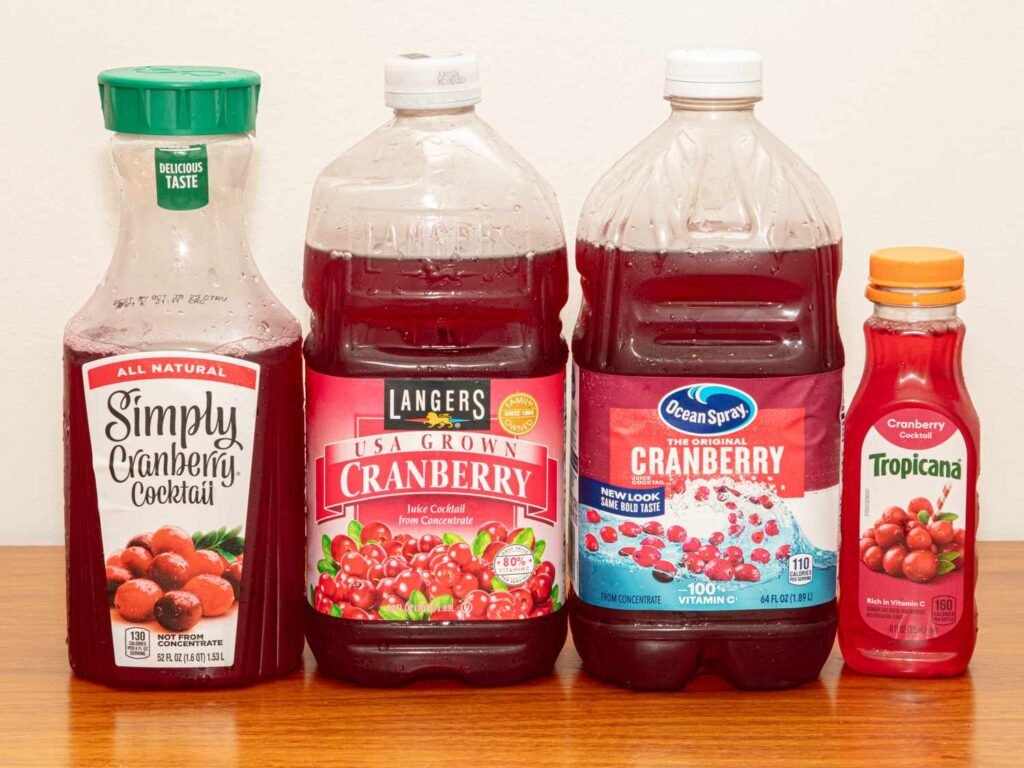We taste-tested four brands of cranberry juice cocktail you’re likely to find at your local supermarket. To find the very best one, we sampled each without knowing which brand was which. Our winner is Langers Cranberry Juice Cocktail, but we also crowned one runner-up.
I always keep a bottle of cranberry juice cocktail on hand. This sweet-tart beverage comes in handy for all sorts of drinks, whether you’re drinking it straight, mixing it into punch for a dinner party, making Cosmopolitans, mixing up nonalcoholic spritzers, or whipping up a vodka-cranberry. The question is: Which brand is worth buying?
To find the best cranberry juice cocktail, our editors taste-tested four widely available brands. Rather than tasting unsweetened cranberry juice, we opted for cranberry juice cocktails, which typically contain cranberry juice concentrate, water, and a sweetener. We chilled and poured each into cups, then sampled them in random order without knowing which brand was which. We then tabulated the results and crowned an overall winner, as well as another worthy contender that we’d be happy to keep at home.
The Criteria
A great cranberry juice cocktail should be both tart and sweet. It should be tangy enough to make you pucker, but it shouldn’t be intensely bitter or astringent. (If it is, you may have picked up 100% cranberry juice.) It should be clear and scarlet—not murky or brown. It should also be pleasantly sweet without being cloying, and it shouldn’t taste sour or artificial.
Serious Eats / Jessie YuChen
Overall Winner
Langers Cranberry Juice Cocktail
This cranberry juice cocktail edged out our runner-up, thanks to its slightly tangier flavor—likely the result of added citric acid. “I like the cranberry flavor here! It makes you pucker a little,” wrote our senior social media editor, Kelli. Our associate editorial director, Megan, and our editorial director, Daniel, enjoyed the tartness of cranberries. “On the sweeter side, but balanced,” wrote our visuals editor Jessie, who thought the flavor was great. Our associate culinary editor, Laila, found it a touch too sour, but appreciated the cranberry-forward profile.
Runner-Up
Ocean Spray Cranberry Juice Cocktail
This cranberry juice cocktail shared a similar flavor profile with the winner, although some tasters found it to be a bit diluted-seeming. “Very thin. But I guess that’s what you want?” wrote Kelli. “Sour, sweet, kinda watery,” wrote Jessie. Others thought it had a noticeable tartness, but liked it overall. “This is the tartest of the bunch, but I really don’t mind that,” wrote Megan. “Noticeable astringency, which I like,” said Laila, who also observed that it had fewer apple-forward notes than the rest of the line-up.
Serious Eats / Jessie YuChen
The Contenders
- Langers Cranberry Juice Cocktail
- Ocean Spray Cranberry Juice Cocktail
- Simply Cranberry Cocktail
- Tropicana Cranberry Cocktail
Key Takeaways and Conclusion
Most cranberry juice cocktails are made with filtered water, cranberry juice concentrate, sugar, and natural flavors. Other common ingredients include ascorbic acid and/or citric acid. Ascorbic acid, which is the chemical term for vitamin C, helps preserve both flavor and color by preventing oxidation and browning, while also adding mild tartness. Citric acid, which occurs naturally in citrus fruits, brings sourness and gives the juice a sharper, more immediate tang. Vegetable concentrates, often derived from carrots and beets, are sometimes used to give the drink a more vibrant, appealing color.
Cranberry juice concentrate is produced by pasteurizing and reducing fresh, filtered cranberry juice into a thick, syrupy liquid. It’s typically frozen for storage, then thawed, diluted with water, and sweetened to make a juice cocktail.
Our winner, Langers Cranberry Juice Cocktail, is made with filtered water, cranberry juice concentrate, natural flavors, and citric acid. Our runner-up, Ocean Spray Cranberry Juice Cocktail, is made with ascorbic acid rather than citric acid and includes vegetable concentrate for color. Overall, our editors preferred Langers for its tangy, bright flavor—though the differences between our winner and runner-up were pretty minor.
Our Testing Methodology
All taste tests are conducted with brands completely hidden and without discussion. Tasters taste samples in random order. For example, taster A may taste sample one first, while taster B will taste sample six first. This is to prevent palate fatigue from unfairly giving any one sample an advantage. Tasters are asked to fill out tasting sheets, ranking the samples according to various criteria. All data is tabulated, and results are calculated with no editorial input to provide the most impartial representation of actual results possible.

